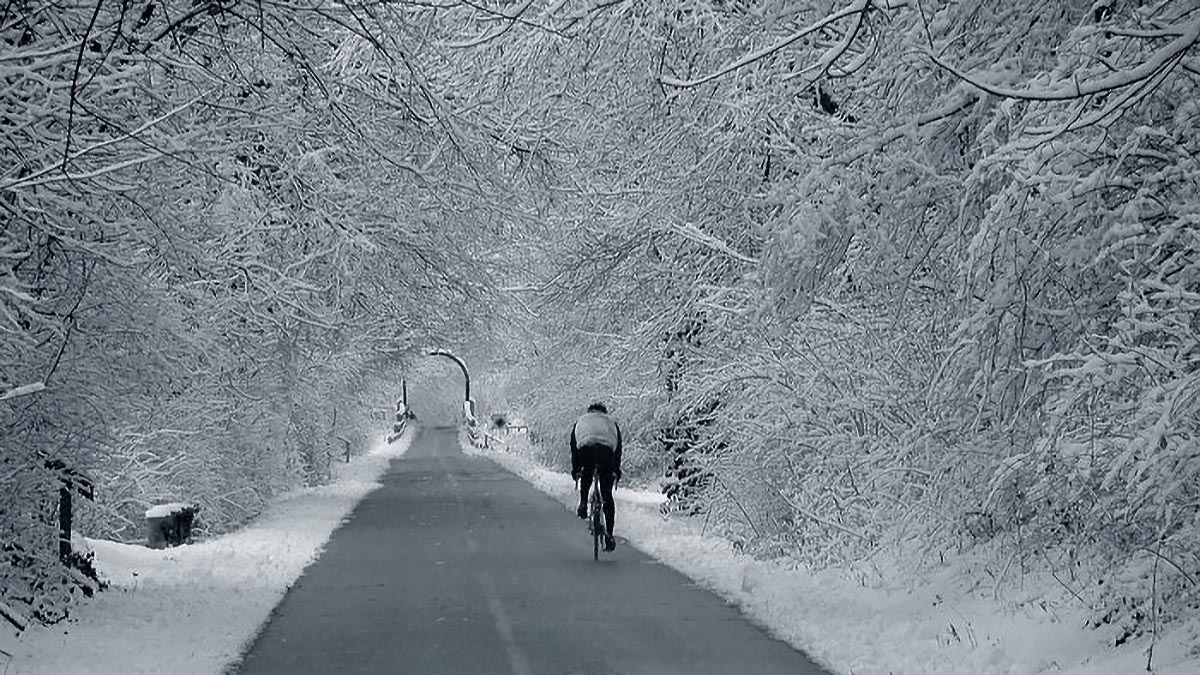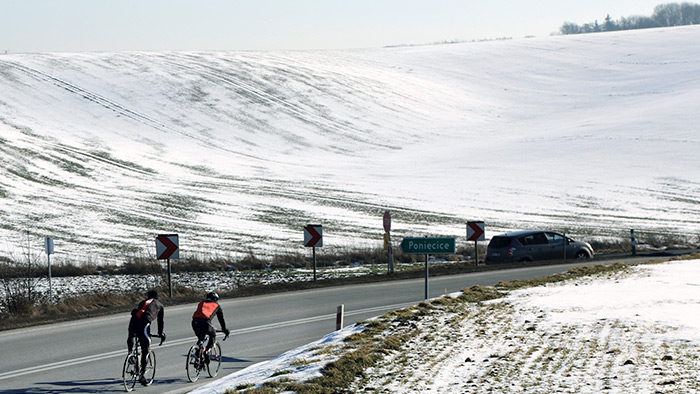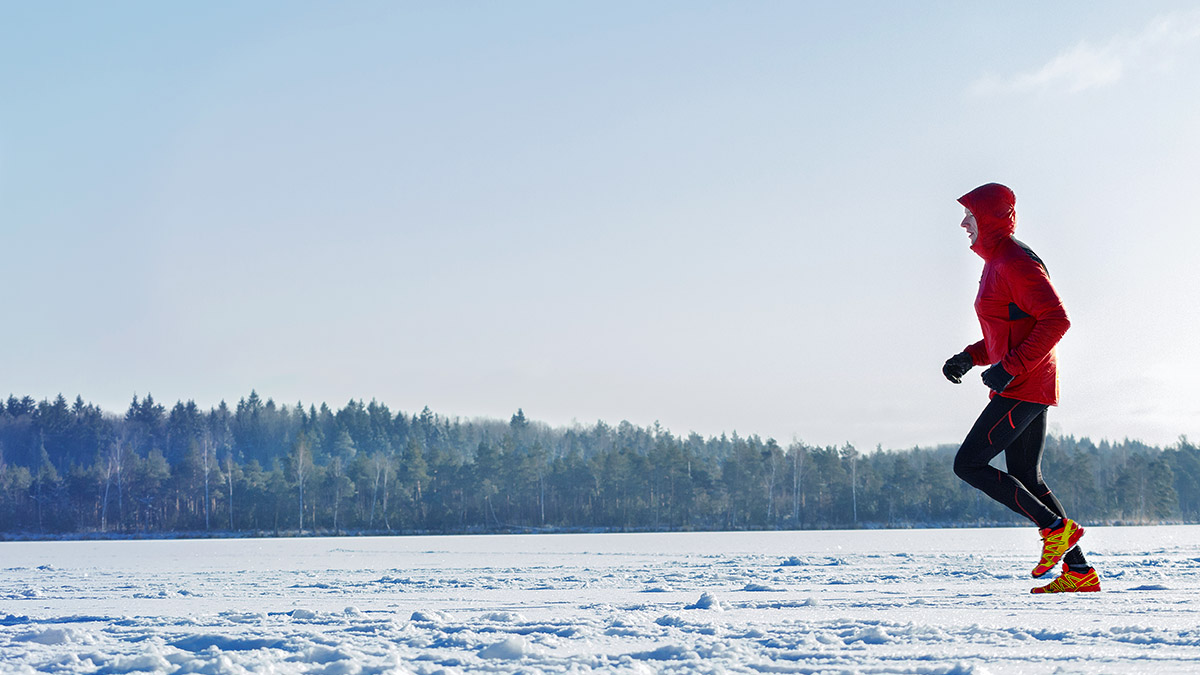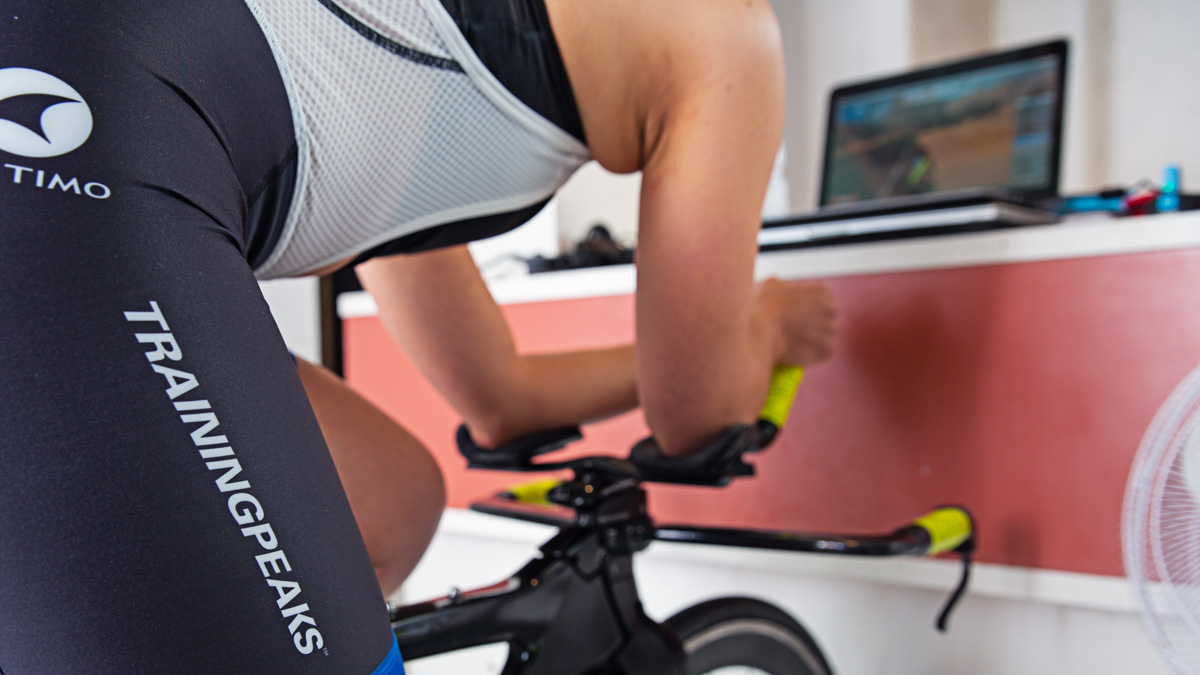Training outdoors throughout the winter can be a challenge to our mental and physical capacity on many levels. The days are shorter. Our bodies crave the long sunny days of spring and summer. Finding the motivation to get outdoors on dark winter days is hard enough. Add in the temperature factor, and many of us retreat to the indoor life of treadmills and trainers. Would you spend more time outside if you could prepare your body for the extremes of winter?
Learning to dress appropriately for outdoor winter exercise is tricky. Many of us think the more clothing we layer on our bodies, the better. There is truth in layers, but there is a strategy to be learned. There are two very different methods of dressing for winter outdoor training.
1. The Sauna Method – Keep The Sweat Locked In
Locking your sweat inside all your layers is a great strategy for athletes who actively sweat even in cold temperatures. Your outermost layer is the key element to this method of dressing for the active sweat producer. Your goal is to prevent sweat from getting cold by blending with the cold wind. You are literally trying to lock in all of your heat to create your own sauna.
Essentials for Dressing to Lock Heat in and Keep Wind Out:
- Insulating base layer made from natural fibers like merino wool or silk
- Fleece or insulating mid-layer
- Windproof jacket
- Windproof pants
- GORE-TEX gloves
- Windproof beanies or ear warmers
- GORE-TEX running shoes or shoe covers for cyclist
Preventing Raynaud’s Disease
This method is also recommended for athletes with Raynaud’s Disease. Raynaud’s (ray-NODES) is named for the French physician Maurice Raynaud, who first recognized the condition in 1862. Spasms are caused by exposure to cold or emotional stress. The disease causes an interruption of blood flow to the fingers, toes, nose, and/or ears when a spasm occurs in the blood vessels of these areas. The lack of blood flow causes the affected area to turn white, then blue, then bright red over the course of the attack. There may be associated tingling, swelling, or painful throbbing as blood flow returns. Raynaud’s symptoms are worsened by the combination of cold and moisture. Exposing hands and feet moist with perspiration to wind and cold can end in a very painful experience for someone with Raynaud’s.
A highly effective homeopathic remedy for Raynaud’s sufferers is the use of topical natural analgesic oils. Primarily, you want to use oils that are analgesic, antispasmodic, assist circulation, are a decongestant, repair fragile skin, balance the endocrine system, increase oxygenation to the body’s cells and detoxify, repair and nourish the skin. One highly suggested oil is rosemary oil. Massage 2 to 4 drops of rosemary essential oil blended with a high-quality non-petroleum ointment like Vaniply onto the hands and feet for the best results.
2. The Wicking Method – Get The Sweat Out
The opposite counterpart to the sauna method of dressing for winter training is to maintain a very breathable layering system for warmth. This method is most effective for athletes who do not sweat as actively in cold temperatures. All athletes will release a small amount of perspiration even in cold temperatures. Technical fibers will wick moisture away from the body to prevent perspiration from staying on the body and chilling the periphery. Avoid wearing cotton because it doesn’t wick moisture and also has very little insulating ability, which will leave you wet, cold and uncomfortable.
Essentials for Dressing to Insulate and Wick Moisture:
- Synthetic base layer like Capilene
- Insulated mid-layer constructed with breathable panels to release moisture
- Protective shell for extreme cold or precipitation
- Beanies or ear warmers
- Gloves that are appropriate to temperature but breathable
Protecting Exposed Skin
Essential to either keeping your sweat locked in with your body heat or wicking the sweat away, exposed skin needs protecting from the wind and cold. Applying a thin layer of a skin protectant like Vaniply to exposed areas of the neck and face will help prevent heat loss as well as protect from wind burn.
Choose the method right for you and experiment on your own. Winter is a beautiful time to train outdoors. Preparing for the elements with a strategy in place will help the miles be more enjoyable. Share these tips with your training partners to get your friends outside this winter too!









